In this blog, AEGIS mainly talks about capacitive shaft voltage discharge. This is a problem in all motors on variable frequency drives (VFDs). But there are other types of damaging bearing current. In this post, they will be talking about circulating motor bearing current. This discussion will focus on circulating current in ac induction motors, but much of this applies to other motor types.
Types of Circulating Current
There are two types of circulating current, high- and low-frequency.
- High frequency circulating current happens in medium-sized and larger (100 hp (75 kW) motors on VFDs.
- Low frequency occurs in large motors, over 400 hp (300 kW).
Both types of circulating current are caused by magnetic flux around the rotor and shaft. In motors on drives, this stray flux is caused by high frequency current leaving the motor windings and running through the frame on its way to ground. In motors on line power, it’s caused by imperfect symmetry in the motor’s construction and nonuniformity of the steel used to contain the magnetic fields that drive the motor.
In either case, the rotor is surrounded by a field of magnetic flux. Because the power to the motor is ac, this flux field is constantly changing. By Faraday’s Law of Induction, this changing magnetic field induces a current on the shaft to oppose the change in flux. The induced current flows along the shaft such that the current’s own magnetic flux opposes the changes in the surrounding field. At any given instant, current will arc through one bearing from shaft to frame, and at the other bearing, from frame to shaft.
This is shown in the figure: The stray motor flux (“Net Flux,” black circles) comes out of the screen at the top and goes into it at the bottom. The induced current is shown as thin black lines with arrows. Its magnetic field (red) goes into the screen on top and comes out on the bottom.
So much for the origins of circulating bearing currents. How do you mitigate the damage they do?
Best Practices for Circulating Bearing Currents
Our recommended best practice is to insulate one bearing, usually the non-drive end, and install an AEGIS Shaft Grounding Ring at the other end. Bearing insulation interrupts circulating current, just like flicking a light switch off. A hybrid/ceramic bearing is best to block circulating current, but usually, an alumina coating on the bearing’s inner or outer ring is enough. (Usually.)
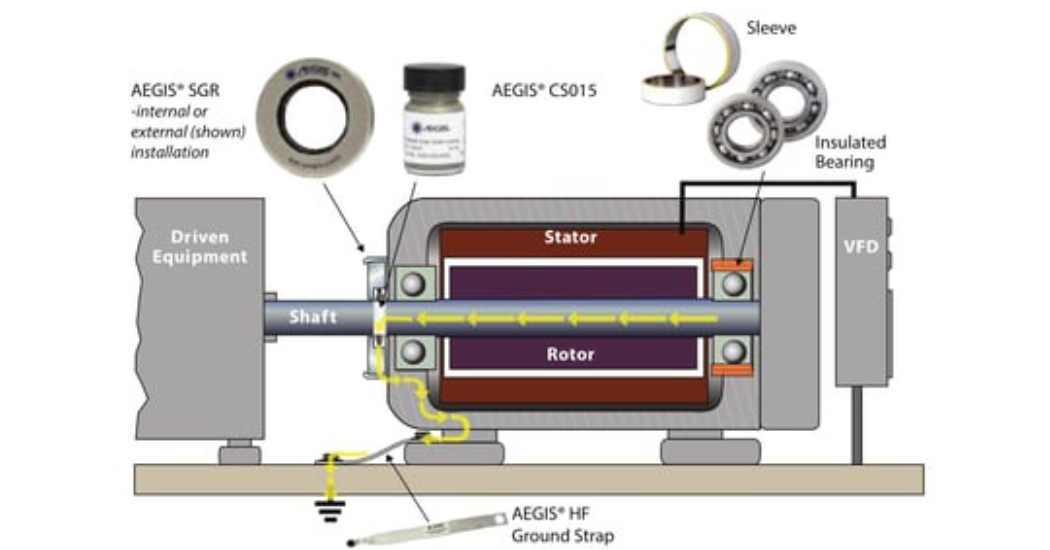 With one bearing thus blocked, current may still flow through the other bearing. In motors on drives, the shaft will still be charged with capacitive shaft voltage. Grounding the shaft with an AEGIS ring at the opposite end from the insulation takes care of potential current from shaft voltage. For motors under 300 hp (225 kW), an AEGIS SGR is sufficient. Larger motors, and medium voltage motors, need the added current-carrying capacity of the AEGIS PRO Ring.
With one bearing thus blocked, current may still flow through the other bearing. In motors on drives, the shaft will still be charged with capacitive shaft voltage. Grounding the shaft with an AEGIS ring at the opposite end from the insulation takes care of potential current from shaft voltage. For motors under 300 hp (225 kW), an AEGIS SGR is sufficient. Larger motors, and medium voltage motors, need the added current-carrying capacity of the AEGIS PRO Ring.
Only bearing insulation is effective against low-frequency circulating currents. High frequency circulating current can also be mitigated by other means. There are various inductive filters out there – reactors, dV/dt filters, and common mode chokes (“inductive absorbers“) – that will reduce circulating current. The question is will they reduce it enough? Will the bearings fail after a year, instead of after six months? That’s not much good. Another problem is that these filters don’t significantly reduce shaft voltage, so the motor bearings will still be damaged by shaft voltage discharge.
There are also sinewave filters that use capacitors along with inductors (“LC filters”). Some of these do work as advertised, and protect against shaft voltage discharge as well as high frequency circulating currents. But they are typically expensive, large, and cause a voltage drop at the motor. Worse: The term “sinewave filter” is sometimes often applied to strictly inductive filters like those described above. So there is a real risk of purchasing an ineffective device due to confusion (and confusing marketing). Let the buyer beware.
Get Reliable Protection Against Bearing Damage
With AEGIS rings, by contrast, our best practices are crystal-clear. When you purchase an AEGIS ring to fit your motor, you know exactly what you’re getting: reliable protection against bearing damage from shaft voltage discharge. And if the motor is large enough to worry about circulating current, an insulated or hybrid bearing opposite the grounding ring will take care of that.
AEGIS rings have another advantage over these other protective methods: They come with a 2-year extended warranty against bearing fluting damage. No other form of shaft grounding comes with a warranty like this.
To learn more about AEGIS shaft grounding and best practices for electrical bearing protection, sign up for a training. AEGIS offer monthly live training webinars, and – pandemic restrictions permitting – they can also visit your facility to review your exact application.

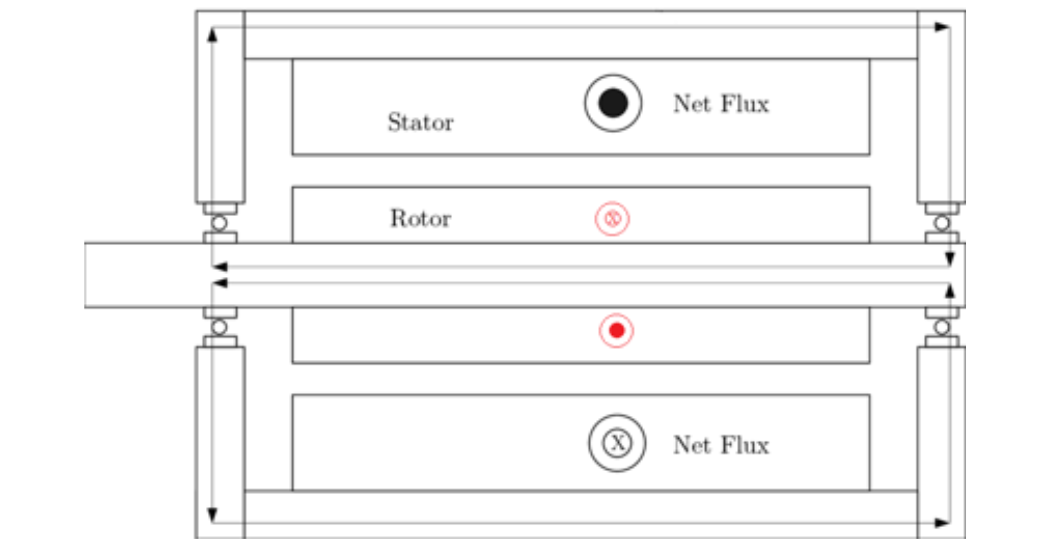
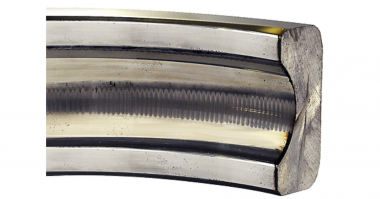
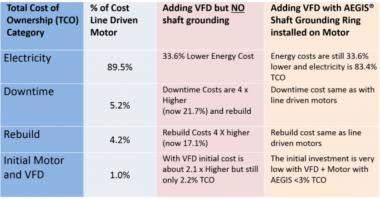
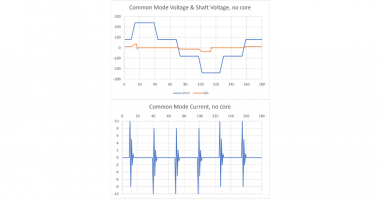
Comments